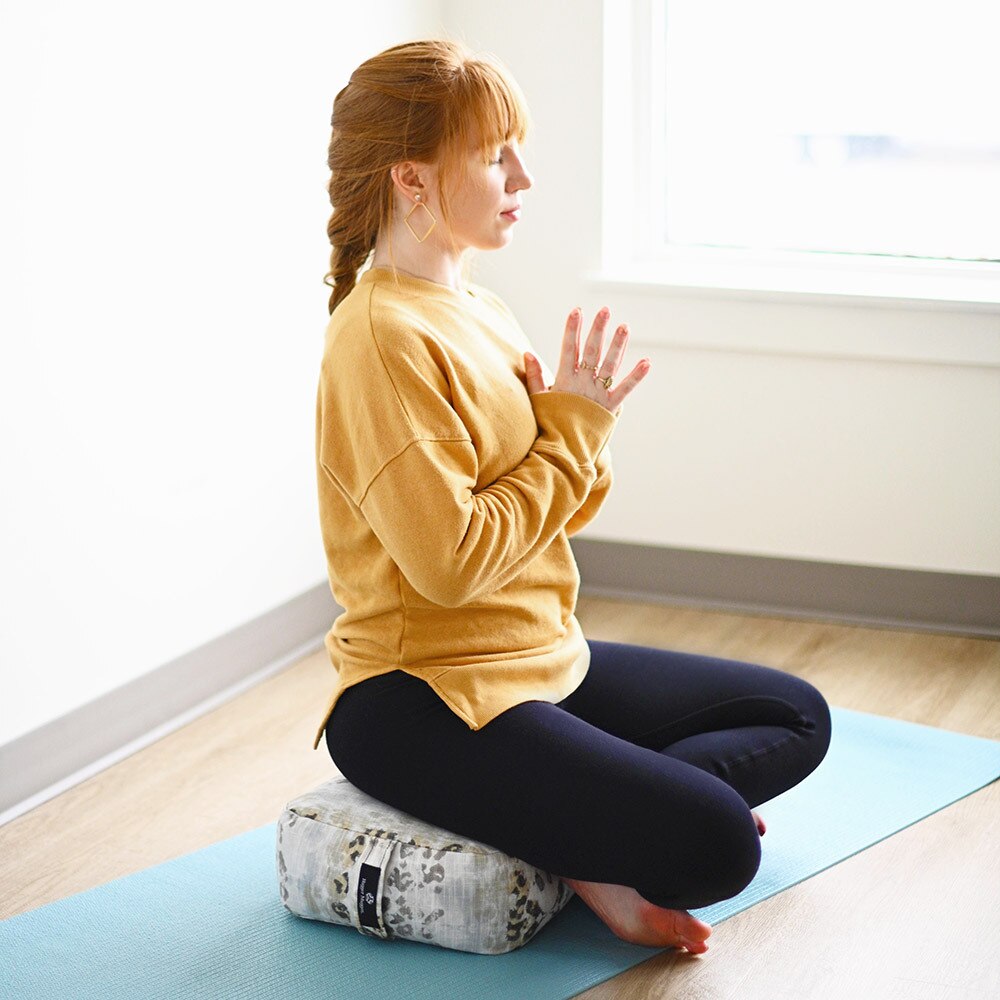
Some people are intimidated by the thought of sitting for 60 minutes or longer, but the truth is that five minutes a day can be easily achieved. This practice can be done even by busy people and has many benefits. Simply by focusing on the breath, you can start to relax. This will help you reduce stress, improve emotional coping skills and overall wellbeing. You can increase your meditation time by gradually increasing the length.
For those who are just starting meditation, it may be a good idea to focus on your breathing. You could start by counting your breathing. If your mind starts wandering, recognize it and then return to your breathing. When you feel at ease, slowly open your eyes. This will likely be repeated several times. You can continue practicing for another five minutes, and then you can return to your meditation practice.

Some people meditate twice per day. Students usually practice in the morning and again in the late afternoon or evening. It's important to find a quiet place that is not too distracting and is comfortable for you to relax. Turn off all electronics, such as your cell phone, and put on noise-canceling headphones. Try to limit distractions to 15 minutes per day. Avoid checking email or answering incoming texts. It is important to concentrate on you and your meditation.
Meditation can be hard at first, just like any other type of exercise. You might feel overwhelmed or in some sort of brain fog. You might feel restless or irritable while you meditate. It's okay to feel uncomfortable in the beginning. It's all about finding the best routine for you. The more challenging aspects of meditation, the more you practice, the more you'll find your way to success.
The goal of meditation is to achieve peace and well-being. Meditation will become a habit if you continue to practice it. Regular meditation will allow you to focus better and meditate for longer periods of time. Feeling calm and relaxed will help you remember and recall details about objects. You can also increase your concentration by using these techniques. Whether you choose to meditate while you're seated or in a chair, you can find an appropriate time for yourself.

You must make time to meditate each day to achieve your goals. Try to meditate at least 10-15 minutes per day. Some people find it easiest to meditate when they're at work or at school, but if you have trouble doing so, you can always try it at other times of the day. You can also meditate at other times to help with your daily stressors. You will also be able meditate at night when you are most peaceful.
FAQ
Why does our weight change with age
How can you tell if your bodyweight has changed?
Weight loss occurs when there is less fat than muscle mass. This means that the amount of calories consumed must exceed the amount of energy used daily. Low activity levels are the most common cause for weight loss. Other factors include stress, illness and pregnancy. Weight gain is when there are more calories than muscle mass. This happens when people consume more calories than they burn during the day. It can be caused by overeating or increased physical activity as well hormonal changes.
Our bodies lose weight mainly because we eat less calories that we burn. The main reason we lose weight is because we exercise more often. This increases our metabolism rate and burns more calories each day. This does not necessarily mean that we will get thinner. What is more important is whether or not our body is losing or gaining weight. If we're burning more calories that we consume, we'll lose weight. But if we're consuming more calories than we're burning, then we're actually storing them as fat.
As we age, we become less agile and don't move as often. We also tend to eat less food than we did when we were younger. This is why we tend to gain weight. However, our muscle mass is more important than we realize and makes us appear larger.
If you don't weigh yourself every week, it's impossible to determine how much weight has been lost. There are many different ways to measure your weight. You can also measure your waist, hips or thighs. Some people prefer to use a bathroom scale while others prefer to measure with tape.
Track your progress by measuring your waistline and weighing yourself every week. To track your progress, you can also take photos every few months of yourself to see how far it has come.
You can also check your height online to find out how many pounds you have. You'd likely weigh 180 pounds if you were 5'10 tall and 180 pounds if you were 180lbs.
What should I eat?
Eat lots of fruits and vegetables. These vegetables and fruits are rich in vitamins and minerals that will keep your immune system strong. They are also rich in fiber, which is good for digestion and makes fruits and vegetables filling. You should eat at least five servings per day of fruit or veg.
You should also drink lots of water. Water flushes toxins from your body and helps you feel full between meals. Drink about eight glasses each day.
Consume whole grains and not refined. Whole grains contain all of their nutrients, including B vitamins and iron. Refined grains lack some nutrition.
Avoid sugary drinks. Sugary drinks are loaded with empty calories and contribute to obesity. Instead, choose water, milk, and unsweetened tea.
Avoid fast food. Fast food has very low nutritional value. Fast food may be delicious, but it will not give you the energy that you need to perform your tasks properly. Use healthier options, such as soups, sandwiches, salads, and pasta.
Reduce your alcohol intake. Avoid alcohol as it can cause empty calories and poor nutrition. Limit your intake to two alcoholic drinks per week.
Red meat consumption should be reduced. Red meats can be high in cholesterol and saturated fat. Choose lean cuts such as beef, pork and lamb, chicken, fish, or turkey.
How does an antibiotic work?
Antibiotics are medications that kill harmful bacteria. To treat bacterial infections, antibiotics are used. There are many types and brands of antibiotics. Some are given orally, while some are injected. Other antibiotics are applied topically.
Many people who have been exposed can be prescribed antibiotics. One example is if someone has had chickenpox and wants to prevent shingles. Penicillin might also be administered to someone with strep throat. This will help prevent the possibility of developing pneumonia.
When antibiotics are given to children, they should be given by a doctor. Children are at greater risk of developing side effects from antibiotics than adults.
Diarrhea is the most common side effect from antibiotics. Side effects of antibiotics include diarrhea, stomach cramps and nausea. These side effects usually disappear once treatment has ended.
How do I know what's good for me?
You need to listen to your body. Your body knows best when it comes to how much exercise, food, and rest you need. To avoid overdoing it, it's important that you pay attention to what your body is telling you. Take care of your body and make sure that you're staying healthy.
How to measure body weight?
A Body Fat Analyzer (BFA) is the best method to measure bodyfat. These devices are used for measuring the percentage of body fat in people who want to lose weight.
Statistics
- In both adults and children, the intake of free sugars should be reduced to less than 10% of total energy intake. (who.int)
- This article received 11 testimonials and 86% of readers who voted found it helpful, earning it our reader-approved status. (wikihow.com)
- The Dietary Guidelines for Americans recommend keeping added sugar intake below 10% of your daily calorie intake, while the World Health Organization recommends slashing added sugars to 5% or less of your daily calories for optimal health (59Trusted (healthline.com)
- WHO recommends consuming less than 5% of total energy intake for additional health benefits. (who.int)
External Links
How To
How to live a healthy lifestyle
A healthy lifestyle is one where you are able to maintain your weight, your health and your fitness level. Healthy living means eating right, exercising regularly, getting enough rest, and staying away from harmful substances like alcohol, tobacco, cocaine, and drugs. Being healthy will make you feel more confident and fit. A healthy lifestyle can help reduce your risk of developing chronic diseases such as heart disease, strokes, diabetes, cancer and osteoporosis.
The main goal of this project was to provide a step-by-step guide on how to live a healthier life. The first part of the project consisted of writing the introduction, which explains what a healthy lifestyle is, why people should adopt a healthy lifestyle and who we are. The body paragraphs are a collection of tips for living a healthy life. Finally, I wrote my conclusion. It summarizes the entire article and gives additional resources if required.
This assignment helped me learn how to write a clear and concise paragraph. I also learned how to organize my thoughts into topic sentences, and the supporting details. Additionally, I learned how to organize my ideas into topic sentences and supporting details. Lastly, I gained knowledge on how to use proper grammar when writing.